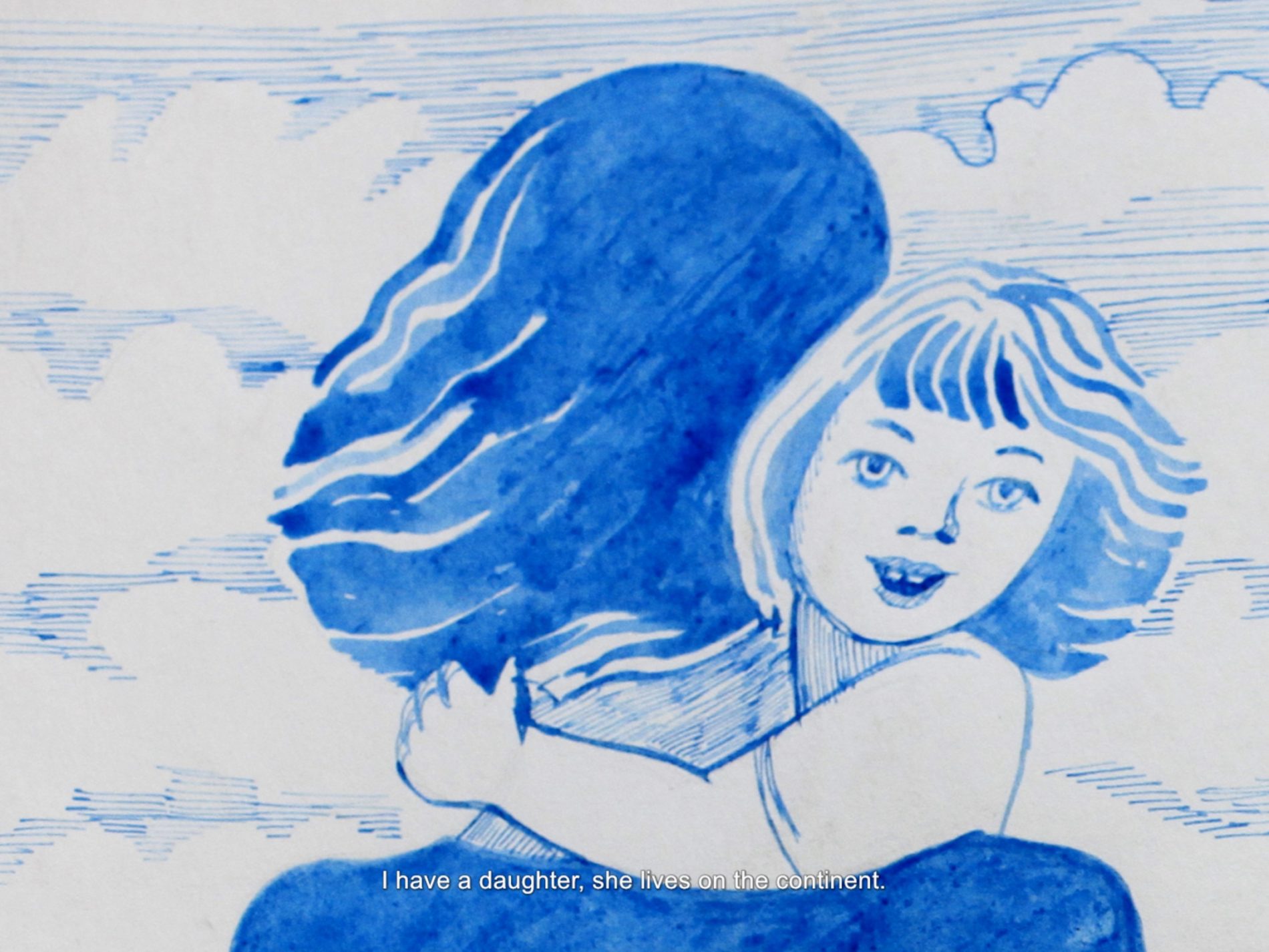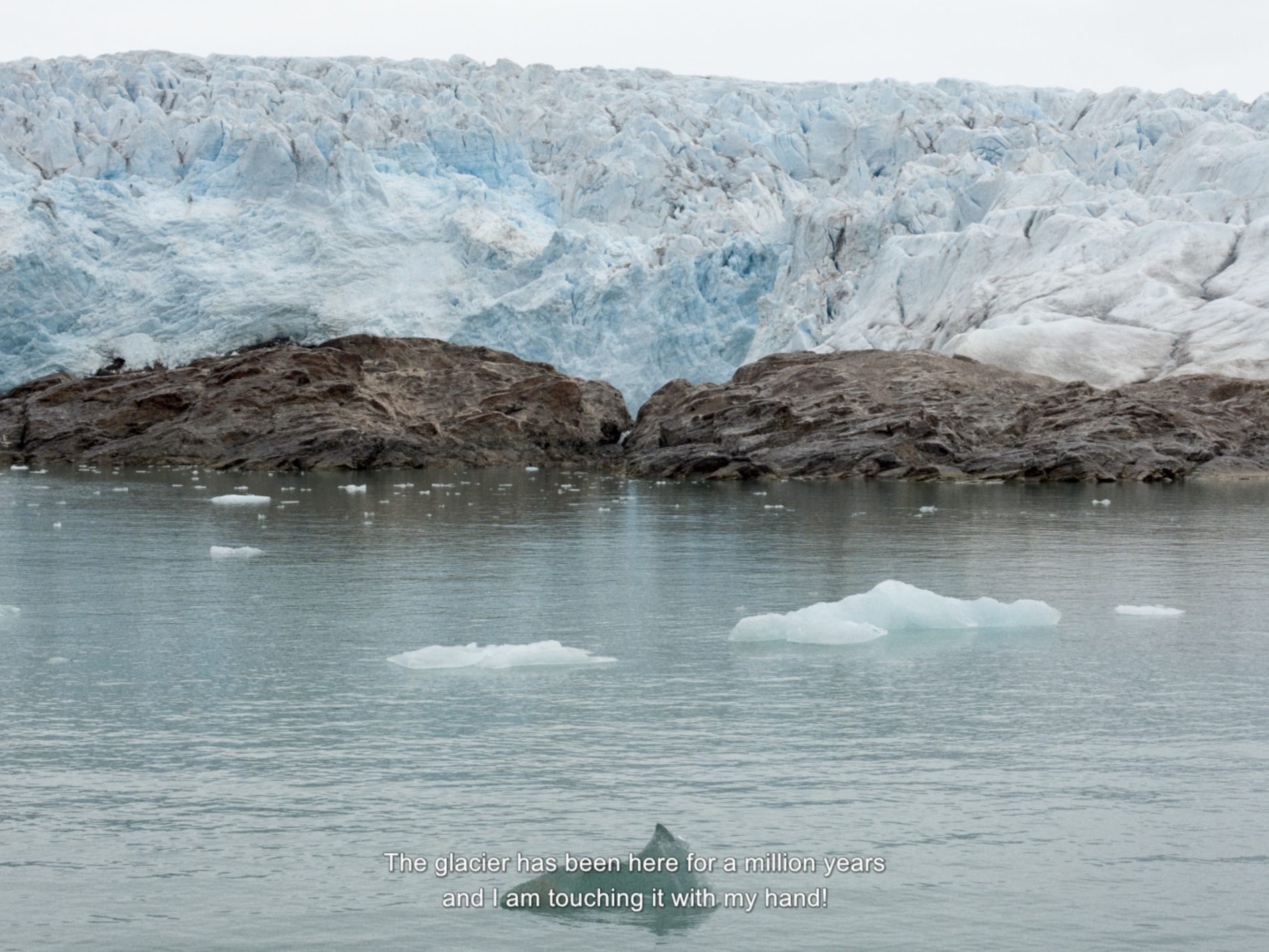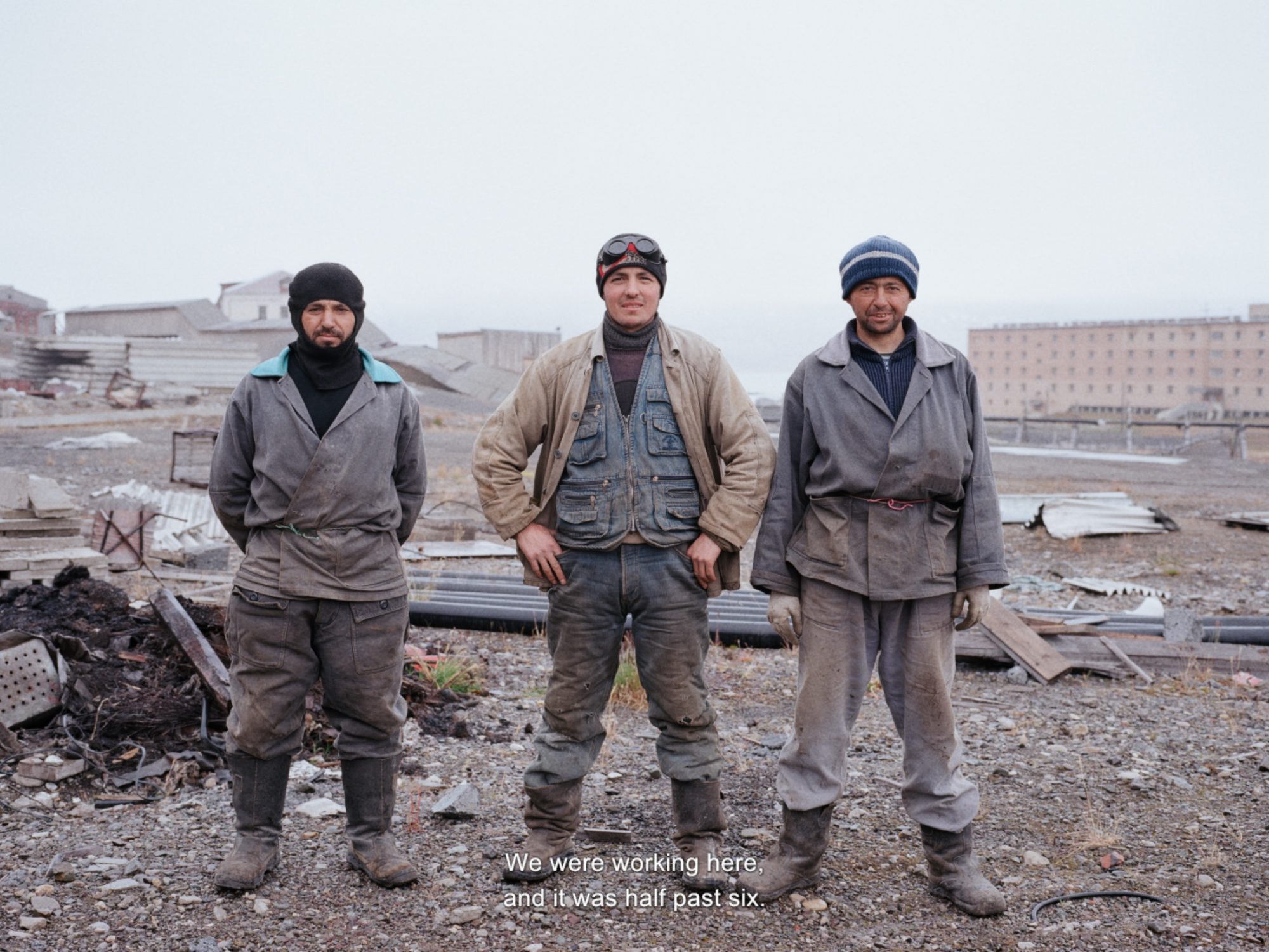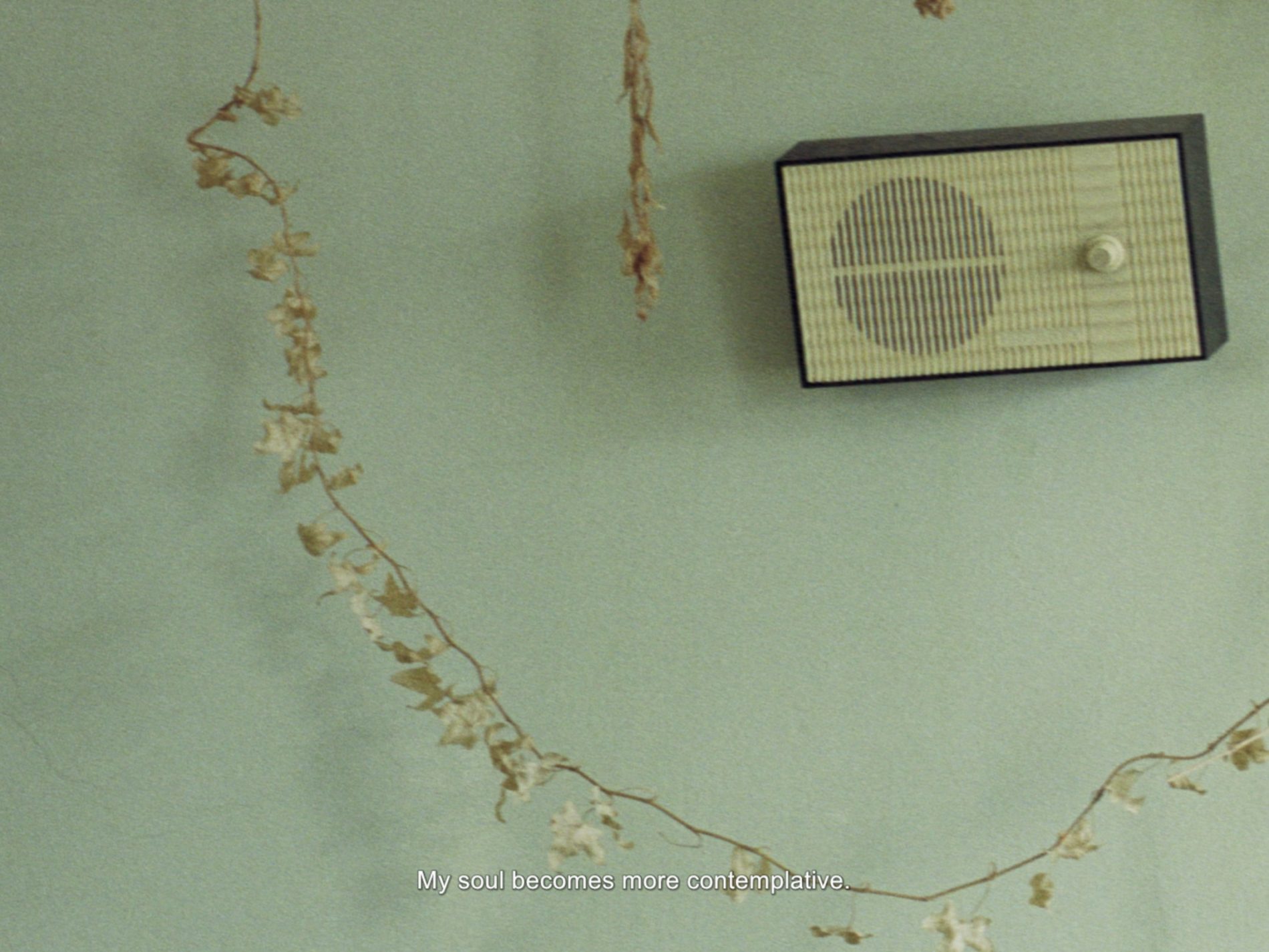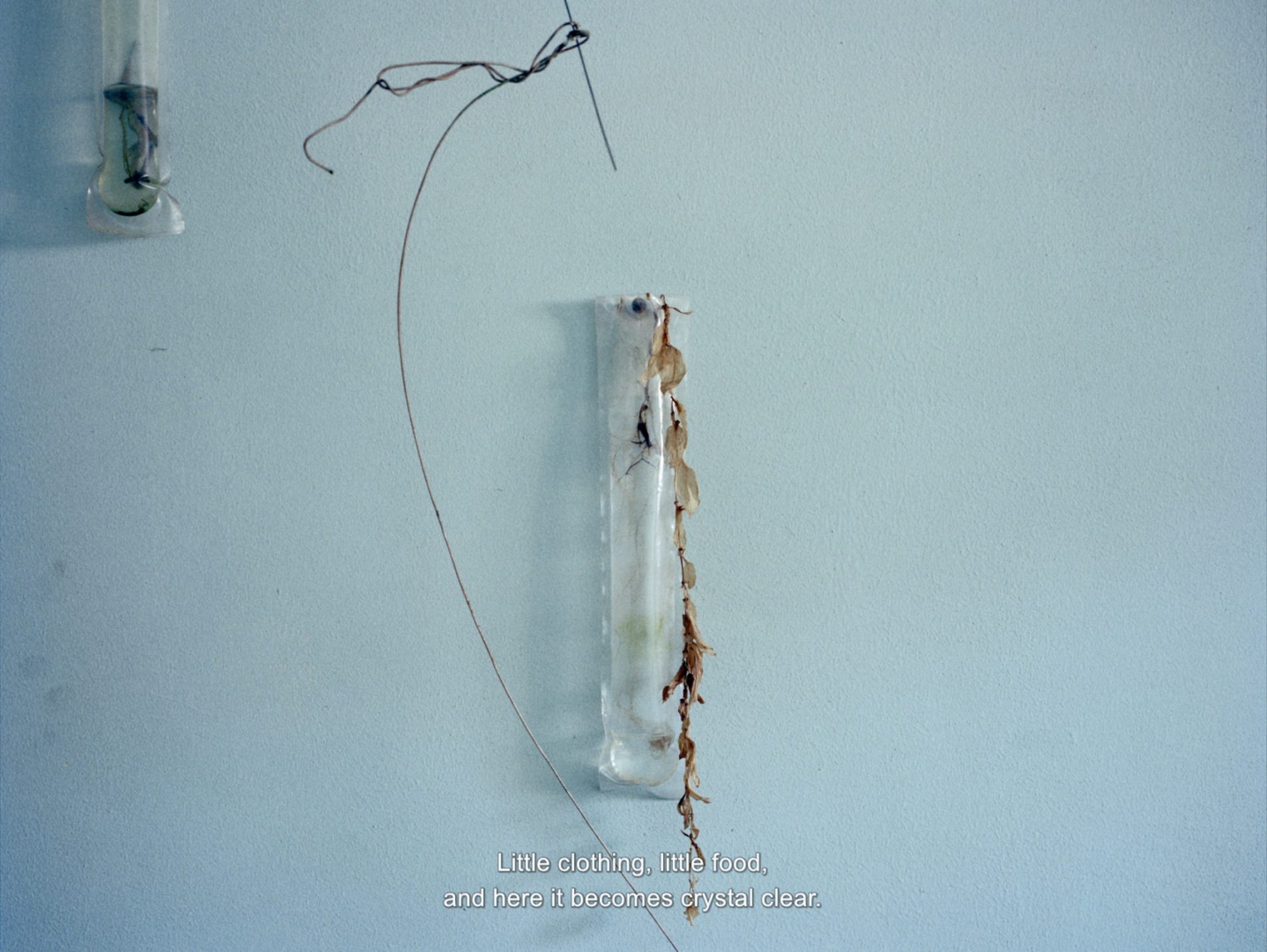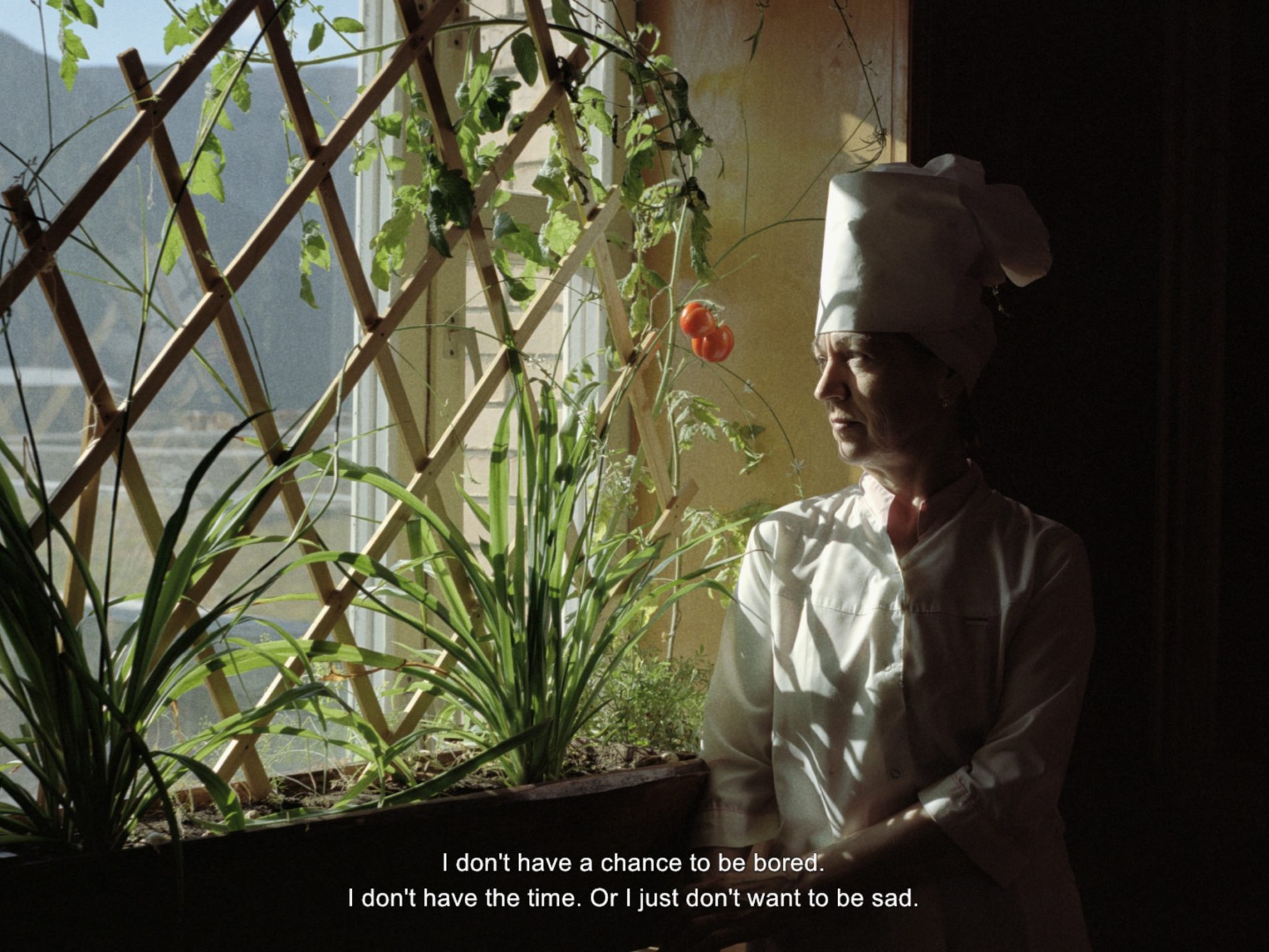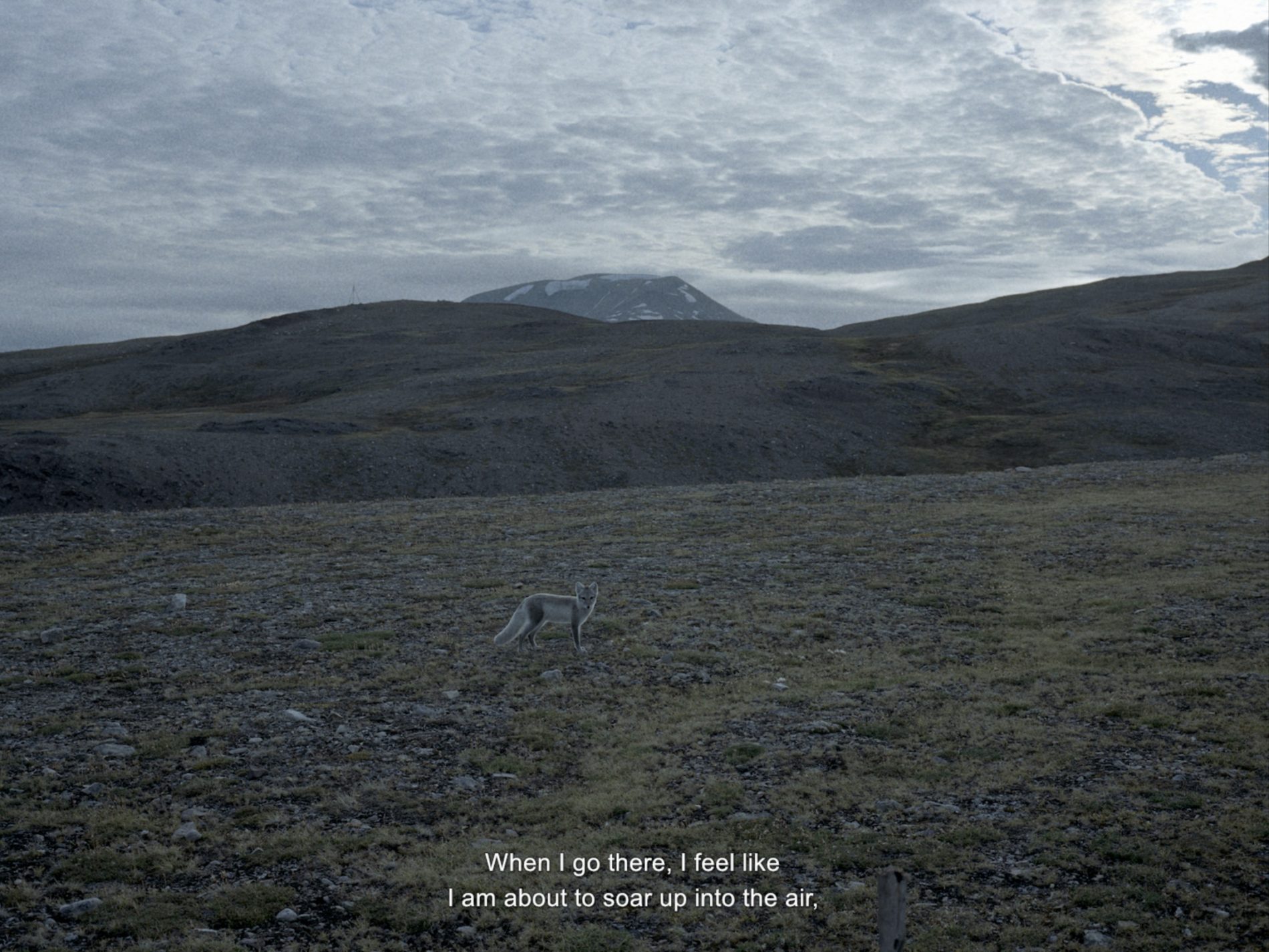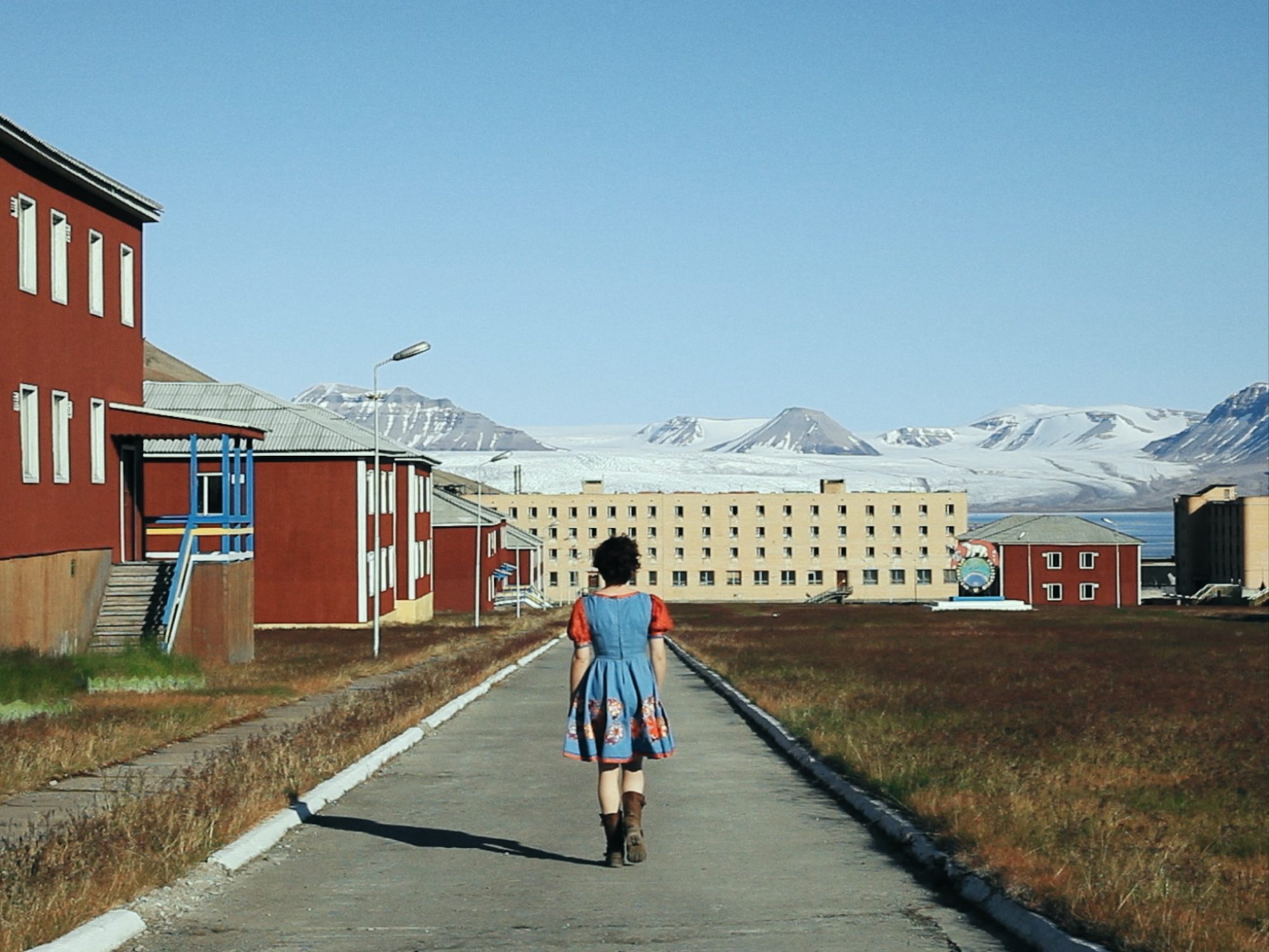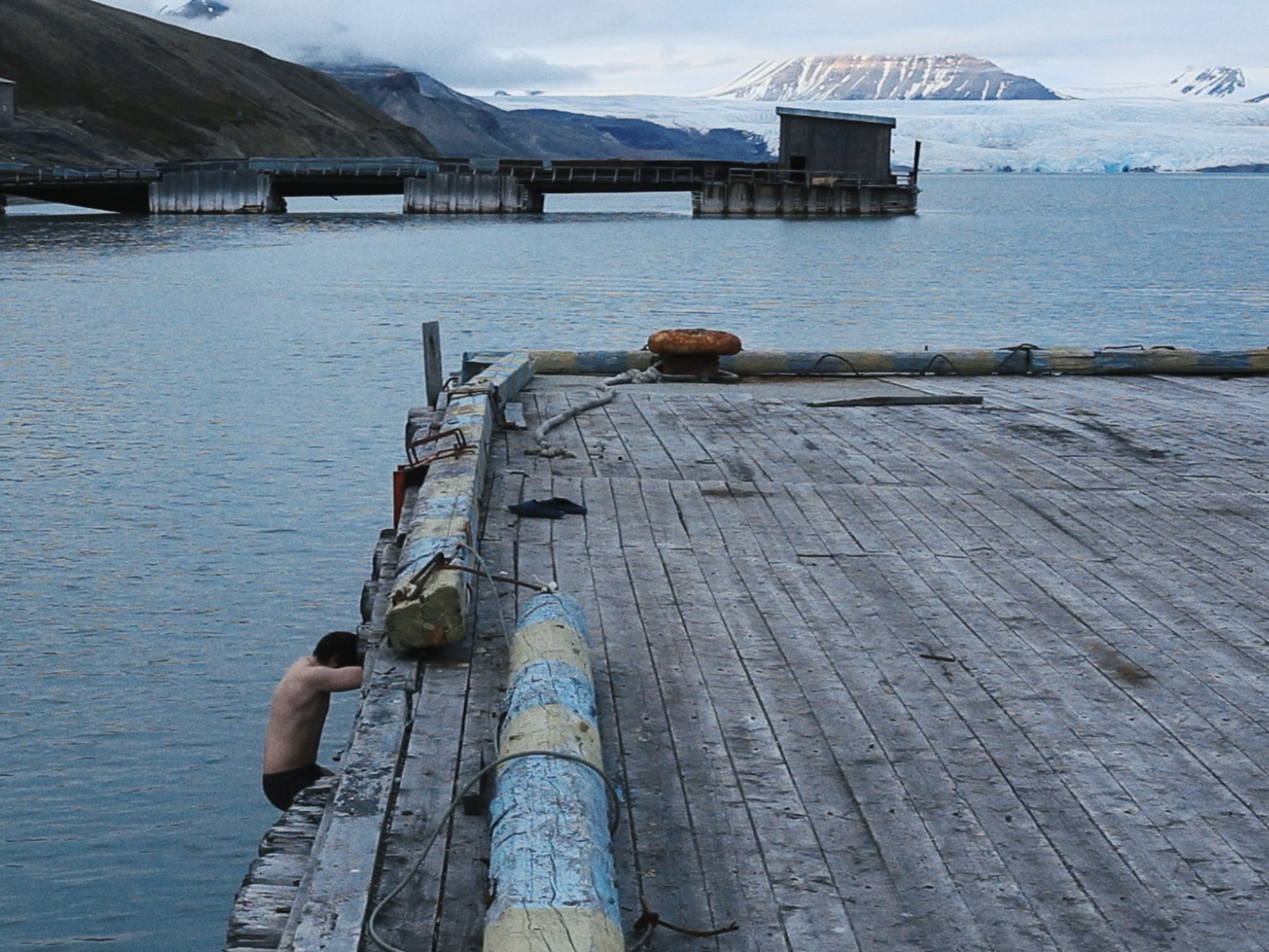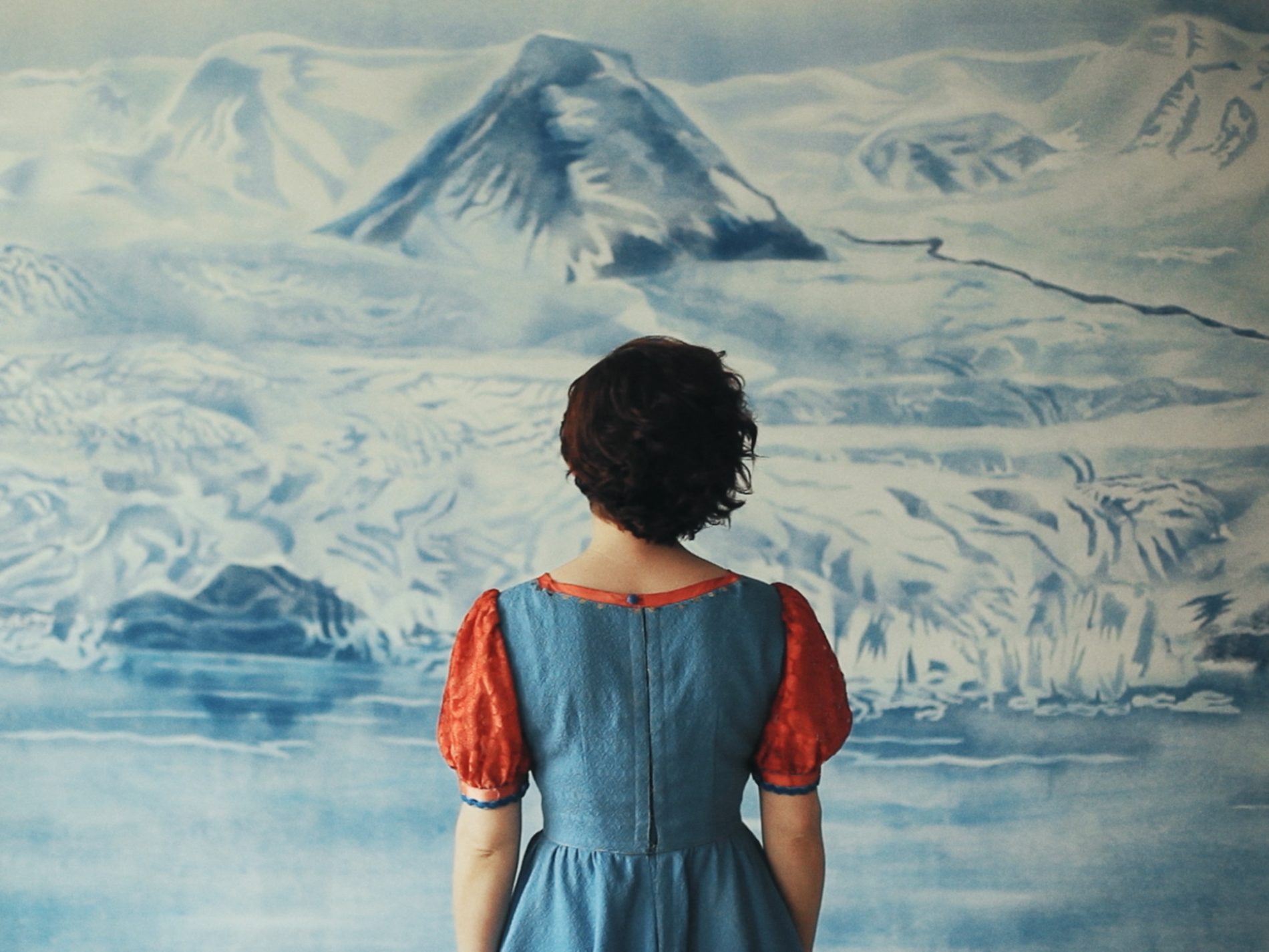
Ieva Epnere, Four Edges of Pyramiden, 2015, video, 20 minutes [courtesy of the artist]
Four Edges of Pyramiden: Ieva Epnere
Share:
What drew you to Pyramiden, and how did you feel once you were there, and you established a connection to the place?
I was invited to Pyramiden by an artist, Sarah Gerats, who has lived on Svalbard since 2012; we met on a two-year postgraduate programme at the Higher Institute for Fine Arts in Ghent. Sarah knew that I speak Russian and therefore she thought that this place would be interesting for me and for my work.
The experience is not easy to describe, since it is something one should experience for him or herself. I was there when there was 24-hour daylight, and I think this also affected me, since I was working a lot and not sleeping much.
People I met there were also special; I think this place makes a significant impression on one’s personality. Luckily, I did not do any special research on this place before … I came, so I arrived as a blank page, so everything was very interesting and surprising. I am from a generation that has a little experience of the Soviet times—I was in school when Latvia was still a part of the Soviet Union—and when I saw Pyramiden’s interiors and “self-designed solutions” for decorations in apartments and other spaces, it was like returning to my childhood. This all of course was so surreal in comparison to the Nordic landscape.
How would you say the work reflects your own personal relationship with the Svalbard archipelago in general, both as a site and situation?
In my work, a woman in a blue dress symbolizes the Russian “dream” of an ideal state or place on earth, which they created from zero, and tried to keep. Unfortunately in the late 1990s this dream was revealed to have failed, and many people had to leave their new homes and new lives in Pyramiden. I am sure, for many of them, that leaving Pyramiden for the continent was not the easiest moment in their lives, given the contrast they must have felt after life there.
